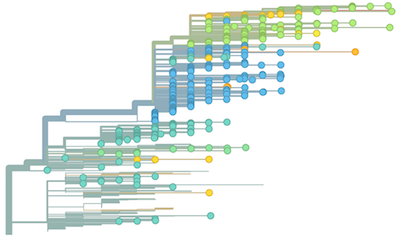Richard Neher and I have compiled another report on recent patterns of seasonal influenza virus evolution with an eye toward projecting forward to 2016 and 2017 flu seasons. All analyses are based on the nextflu platform. Doing weekly updates on nextflu has forced us to keep pipelines current and has made putting together these reports not such a chore.
This time around, the biggest news is within H3N2, where we’re seeing the rapid spread of a subclade within 3c2.a viruses. This subclade is primarily distinguished by the HA1:171K mutation (along with changes HA2:77V/155E). We predict these viruses will predominate in the future H3N2 population. However, we lack antigenic data to really say whether the vaccine needs updating. It’s possible to have this sort genetic evolution without strong antigenic evolution necessitating a vaccine update.
In putting together the report this time, it was helpful referring to past reports from last September and this February. Gratifyingly, in February we stated:
Barring substantial changes in other clades, we predict the (HA1:171K, HA2:77V/155E) variant to dominate.
This is exactly what’s come to pass in the last 6 months. As we keep doing this, we’ll be able to compile hits-and-misses and see where the intuition and models are succeeding and where they are failing.
